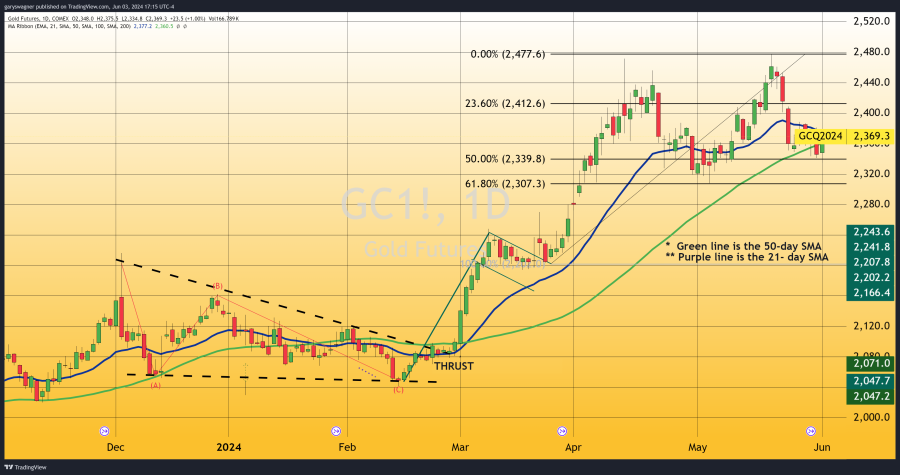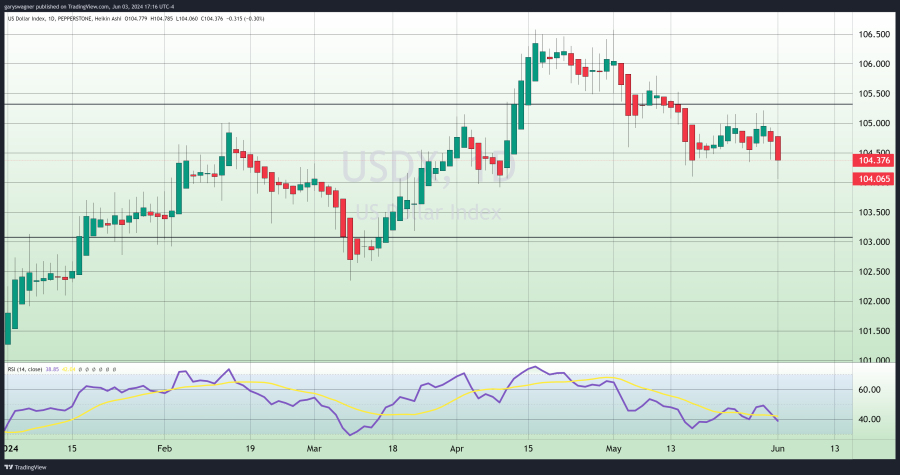
Gold Futures Regain Momentum as Economic Concerns Intensify
Gold futures found renewed strength on Monday, closing back above the crucial 50-day moving average, as economic data fueled expectations of potential interest rate cuts by the Federal Reserve later this year.
Friday’s close took gold futures to its lowest price point since hitting the record high of $2477.10, and a record close of $2461.40 on Monday, May 20. What followed was a dramatic and strong three-day price decline reaching a low of $2351 on Thursday, May 23. Between Wednesday, May 22, and Thursday the 23rd, gold declined just over $88 per troy ounce and consolidated trading sideways until gold traded to its low last Friday.

This recovery was driven by a weaker U.S. dollar, which declined 0.53% to 104.09, its lowest level since April 9.

The first signs of a potential resurgence in gold prices was largely attributed to mounting concerns over the state of the U.S. economy. The Institute for Supply Management (ISM) reported that U.S. manufacturing activity slowed for the second consecutive month in May, with new goods orders dropping at the fastest pace in nearly two years.
This data point, coupled with a moderation in inflation as indicated by the Personal Consumption Expenditures (PCE) price index report released on Friday, has bolstered the notion that the Federal Reserve may implement one or two rate cuts this year to support the economy.
Historically, gold has been viewed as a safe-haven asset during periods of economic uncertainty and low interest rates, as it tends to perform well in such environments. The recent data releases have reignited optimism among investors that the Fed's aggressive rate hikes aimed at curbing inflation may have achieved their desired effect, paving the way for a potential shift in monetary policy later in the year.
According to Reuters, "U.S. manufacturing activity slowed for a second straight month in May as new goods orders dropped by the most in nearly two years, but a measure of input inflation fell back from the highest since mid-2022, a monthly survey showed on Monday."
The recent downturn in gold prices, which saw the precious metal dip below its 50-day moving average for the first time since late February, has been attributed to fluctuating expectations surrounding the Federal Reserve's rate decisions. However, the latest economic data has reignited bullish sentiment in the gold market, as investors anticipate a potential easing of monetary policy in the coming months.
As the Federal Reserve continues to navigate the delicate balance between supporting economic growth and managing inflationary pressures, the performance of gold will likely remain closely tied to the central bank's policy decisions and the broader economic landscape.
Kitco Media
Gary Wagner
